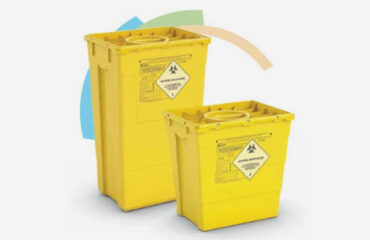Facts About Reclaim Waste Revealed
Table of ContentsIndicators on Reclaim Waste You Need To KnowRumored Buzz on Reclaim WasteSee This Report on Reclaim WasteNot known Facts About Reclaim WasteA Biased View of Reclaim Waste
Domestic sewage waste refers to the waste and items from a household septic storage tank. The appropriate management and disposal of domestic sewer waste call for liquid waste to be moved to a sewage treatment plant where the appropriate methods and tools are applied to detoxify and dispose of waste.
Industrial waste typically includes prospective hazards, such as combustible products or a blend of liquid and strong waste items, and requires an advanced and detailed disposal process. The disposal of industrial waste usually entails the filtration of waste prior to transport to make sure safe and correct disposal. Industrial waste is developed from results and overflow of commercial procedures and production.
This sort of waste can not use the exact same sewage administration transport or procedures as septic or business fluids. The commercial waste management process requires the assessment and screening of fluid waste prior to it undergoes the disposal procedure (liquid waste disposal). Drainage waste is the liquid waste that comes from overflow and excess stormwater in highly populated areas or cities
Runoff waste can create contamination and flooding if not managed effectively. Making certain appropriate waste management can prevent calamities and lower environmental damage.
Some Of Reclaim Waste
Call PROS Solutions today to find out about our waste management and disposal solutions and the proper methods to care for the fluid waste you produce.
(https://www.awwwards.com/reclaimwaste1/)Do you recognize what takes place to your water when you end, purge the bathroom or drain the washing device? No? Well, it deserves knowing. This supposed 'wastewater' is not only an essential resource however, after treatment, will certainly be released to our land, waterways or the ocean. Used water from commodes, showers, baths, cooking area sinks, laundries and commercial processes is recognized as wastewater.

water utilized to cool down machinery or tidy plant and devices). Stormwater, a type of wastewater, is overflow that streams from agricultural and city areas such as roofing systems, parks, gardens, roads, paths and seamless gutters right into stormwater drains pipes, after rain. Stormwater look here flows neglected straight to local creeks or rivers, ultimately getting to the ocean.
The Only Guide for Reclaim Waste
In Queensland, the majority of wastewater is treated at sewage treatment plants. Wastewater is transported from domestic or commercial websites with a system of drains and pump terminals, understood as sewerage reticulation, to a sewage therapy plant.
The Division of Natural Resources suggests city governments about managing, operating and maintaining sewage systems and treatment plants. In unsewered areas, regional governments may call for householders to set up private or household sewer treatment systems to deal with domestic wastewater from toilets, kitchens, shower rooms and washings. The Department of Natural Resources authorizes using household systems when they are proven to be efficient.
The majority of stormwater receives no treatment. In some new class, treatment of some stormwater to remove litter, sand and crushed rock has started making use of gross contaminant catches. Wastewater therapy occurs in 4 stages: Gets rid of solid issue. Larger solids, such as plastics and various other items wrongly released to sewers, are removed when wastewater is gone through displays.
Wastewater then moves right into large containers where solids clear up and are removed as sludge. Grease and residue are skimmed from the surface. Uses tiny living organisms called micro-organisms to damage down and get rid of remaining liquified wastes and fine fragments. Micro-organisms and wastes are integrated in the sludge. Gets rid of nitrogen and phosphorus nutrients that might trigger algal blossoms in our waterways and threaten marine life.
9 Simple Techniques For Reclaim Waste
Nutrient elimination is not available whatsoever sewage treatment plants since it needs expensive specialised equipment. It is becoming much more typical in Queensland. Clear liquid effluent produced after treatment might still contain disease-causing micro-organisms. If this effluent is released right into rivers such as rivers or the sea, the micro-organisms will at some point pass away out.

This normally means wastewater has to be dealt with or pollutants removed prior to it can be discharged to waterways. The majority of wastewater streams into the sewage system. Under the Act, regional federal governments administer authorizations and licences for eco appropriate activities (Periods) including wastewater releases that might have a neighborhood impact. The division provides authorizations and licences to Periods involving wastewater releases that could have a regional or statewide influence.
All about Reclaim Waste
Surveillance provides valid information about water quality and can confirm that licence conditions are being met. The information obtained through surveillance gives the basis for making water quality decisions.